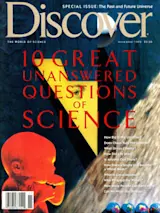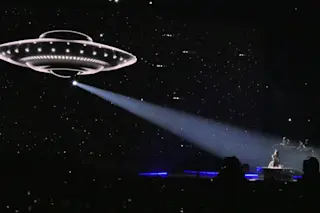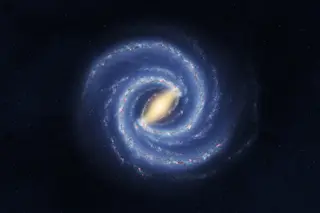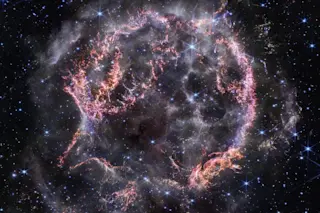On the plains of San Agustin, a vast new mexican valley filled with sagebrush and inhabited mostly by cattle, MIT radio astronomer Jacqueline Hewitt sits in the control room of the Very Large Array, a collection of 27 rail-mounted radio telescopes, each with a dish antenna more than 80 feet across. The antennas are positioned as far apart as possible, forming a Y with the control room at the center and the farthest telescope in each arm some 15 miles away. The dishes are all focused on a single point in the sky. Hewitt is tuning in on a quasar--a pointlike object billions of light-years away that radiates the energy of a million suns, mostly as radio waves. She is waiting for its signal to flicker.
At the four-meter optical telescope atop Cerro Tololo, in the dry mountains of northern Chile, another MIT astronomer, John Tonry, is looking at galaxies, ...














